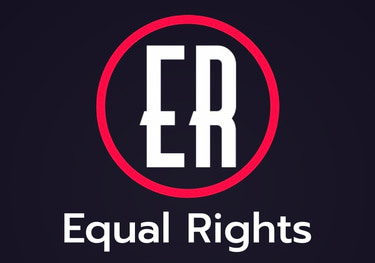Gender inequality in the workforce
is significantly influenced by the unequal burden of child care responsibilities
Kylo B
7/28/2024
Gender inequality in the workforce is significantly influenced by the unequal burden of child care responsibilities, which often falls disproportionately on women. This disparity exacerbates existing gender inequalities and has profound implications for women's career trajectories, lifetime earnings, and overall economic participation.
Here’s a deeper exploration of how inadequate child care contributes to gender inequality and its broader implications:
Key Aspects of Gender Inequality Due to Child Care Burden:
Career Interruption and Workforce Exit:
Women are more likely to take career breaks or exit the workforce entirely to manage child care responsibilities. These interruptions can derail career progression, leading to fewer opportunities for promotions and advancement.
Part-Time Work and Reduced Hours:
Many women opt for part-time work or flexible schedules to balance work and child care duties. While this may help manage immediate responsibilities, it often results in lower pay, fewer benefits, and limited career growth compared to full-time positions.
Occupational Segregation:
Women may choose or be pushed into careers and sectors that offer more flexibility but lower pay and status. This occupational segregation limits women's economic opportunities and reinforces gender pay gaps.
Economic Implications:
Lower Lifetime Earnings:
Career interruptions, part-time work, and occupational segregation contribute to lower lifetime earnings for women. The cumulative effect of these factors can significantly reduce women’s financial security and retirement savings.
Gender Pay Gap:
The unequal distribution of child care responsibilities directly contributes to the gender pay gap. Women earn less on average than men, and the gap widens with age and as career interruptions accumulate.
Reduced Economic Participation:
Lower workforce participation rates among women due to child care responsibilities result in underutilization of their skills and talents. This not only affects individual economic outcomes but also reduces overall economic productivity and growth.
Broader Social Implications:
Impact on Family Dynamics:
Traditional gender roles reinforced by unequal child care burdens can perpetuate stereotypes and limit women’s opportunities for personal and professional growth. This dynamic affects family decision-making and the distribution of household responsibilities.
Social and Economic Inequality:
Gender inequality in the workforce contributes to broader social and economic inequalities. Women are more likely to experience poverty, especially single mothers and women of color, exacerbating social disparities.
Intergenerational Effects:
The economic disadvantages faced by women due to child care responsibilities can have intergenerational impacts. Children growing up in households with lower income and fewer resources may have limited access to education and opportunities, perpetuating cycles of inequality.
Potential Solutions:
Child Care Policies and Subsidies:
Governments can implement policies to provide affordable, high-quality child care. Subsidies, tax credits, and direct funding for child care services can help alleviate the financial burden on families and enable more women to participate fully in the workforce.
Parental Leave Policies:
Offering paid parental leave for both mothers and fathers can help distribute child care responsibilities more equally. Policies that encourage or mandate shared parental leave can reduce the career impact on women.
Flexible Work Arrangements:
Employers can offer flexible work arrangements, such as remote work, flexible hours, and part-time options with career progression pathways. These arrangements can help parents balance work and child care without compromising their careers.
Employer-Supported Child Care:
On-site child care facilities, child care subsidies, and support services provided by employers can reduce the burden on working parents and help retain talented employees.
Promoting Gender Equality in the Workplace:
Organizations can implement policies and practices that promote gender equality, such as mentorship programs, diversity training, and equal pay initiatives. Encouraging women’s representation in leadership positions can also help address systemic biases.
Case Studies and Examples:
Nordic Countries:
Countries like Sweden and Norway have extensive child care and parental leave policies that promote gender equality. These policies have led to higher female labor force participation rates and narrower gender pay gaps.
Iceland’s Parental Leave Policy:
Iceland mandates equal parental leave for both parents, encouraging shared responsibility for child care. This policy has contributed to more balanced workforce participation and reduced gender inequality.
Corporate Initiatives:
Companies like Google and Patagonia offer generous parental leave and on-site child care facilities. These initiatives help retain female employees and promote gender equality within the organization.
The burden of child care disproportionately falling on women exacerbates gender inequality in the workforce, leading to lower lifetime earnings and reduced career advancement opportunities. Addressing this issue through comprehensive child care policies, supportive workplace practices, and gender equality initiatives can help mitigate these disparities and promote a more inclusive and equitable workforce.
